Top 10 Foods Highest in Protein
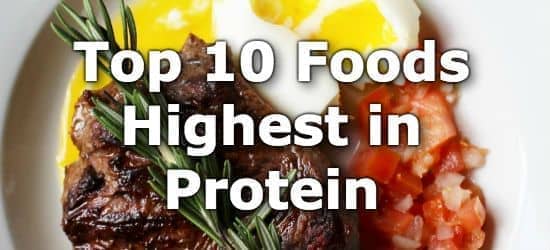
Protein is a macronutrient that forms the building blocks of the human body. It is necessary for many different functions, including growth and repair of all types of tissues, formation of enzymes and hormones, immune system function, and regulation of fluid and nutrient balance. A deficiency in protein leads to muscle atrophy and impaired functioning of the body in general. (1)
How much protein do you need?
The reference dietary intake (RDI) of protein is between 46 and 63 grams for most adults, with pregnant and lactating women needing up to 65 grams per day. (2) The daily value (DV) for protein is set at 50 grams per day (3), which is an average that works for most people. Athletes or other people looking to build muscle mass may want to consume more protein.
High protein foods include lean chicken, lean pork, fish, lean beef, tofu, beans, lentils, low-fat yogurt, milk, cheese, seeds, nuts, and eggs.
Below is a list of healthy protein-rich foods sorted by common serving size. Use the protein nutrient ranking to sort by 100 gram or 200 calorie serving sizes. For more information, see the lists of vegetarian protein, high protein fruits, and high protein vegetables.
-
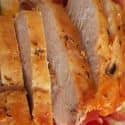 1. Lean Chicken Breast
1. Lean Chicken Breast
Protein
in a 6oz BreastProtein
per 100gProtein
per 200 Calories54.5g
(109% DV)32.1g
(64% DV)40.8g
(82% DV)More Poultry High in Protein
- 62g (124% DV) in a whole chicken leg
- 53.9g (108% DV) per 6oz of lean ground turkey
- 51.2g (102% DV) in a 6oz turkey breast
- 38g (76% DV) in 1 cup of light chicken meat
- 31.9g (64% DV) in a chicken thigh
- 24.5g (49% DV) in a chicken drumstick
See all meats high in protein.
-
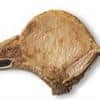 2. Lean Pork Chops
2. Lean Pork Chops
Protein
in a 6oz ChopProtein
per 100gProtein
per 200 Calories52.7g
(105% DV)31g
(62% DV)31.8g
(64% DV)More Pork Products High in Protein
- 50.8g (102% DV) in 6oz of broiled pork tenderloin
- 43.7g (87% DV) in 6oz of ground pork
- 39.7g (79% DV) in 1 cup of diced lean ham
- 30g (60%) DV in a 6oz rack of pork ribs
- 19.2g (38% DV) in 3oz of salami
- 13.8g (28% DV) per 3oz of spam
See all meats high in protein.
-
 3. Tuna
3. Tuna
Protein
in a 6oz FilletProtein
per 100gProtein
per 200 Calories50.8g
(102% DV)29.9g
(60% DV)32.5g
(65% DV)More Fish High in Protein
- 45g (90% DV) in a 6oz salmon fillet
- 44.5g (89% DV) in a 6oz tilapia fillet
- 41.4g (82% DV) in a 6oz cod fillet
- 22.6g (45% DV) in 3oz of canned tuna
- 19.4g (39% DV) in 3oz of cooked shrimp
See all fish and seafood high in protein.
-
 4. Beef (Skirt Steak)
4. Beef (Skirt Steak)
Protein
per 6oz SteakProtein
per 100gProtein
per 200 Calories48.7g
(97% DV)28.7g
(57% DV)21.4g
(43% DV)More Lean Red Meat High in Protein
- 60.4g (121% DV) in a 6oz lamb roast
- 44.8g (90% DV) in 6oz of lean ground beef
- 28.4g (57% DV) in 3oz of roast beef
- 24.2g (48% DV) in 3oz of roast buffalo
- 21.7g (43% DV) in a 3oz beef hamburger
See all meats high in protein.
-
 5. Firm Tofu
5. Firm Tofu
Protein
per CupProtein
per 100gProtein
per 200 Calories43.5g
(87% DV)17.3g
(35% DV)24g
(48% DV)More Soy Foods High in Protein
- 33.7g (67% DV) in 1 cup of tempeh (fermented tofu)
- 31.3g (63% DV) per cup of cooked soybeans
- 14g (28% DV) in a 16oz glass of soymilk
- 9.2g (18% DV) per cup of soy yogurt
- 7.9g (16% DV) per tblsp of soy protein powder
Note: The amount of protein in tofu can range between 4.8g (10% DV) to 17.3g (35% DV) per 100 gram serving (or a little less than 1/2 cup). See the nutrition comparison of 10 common tofu brands. To find more, use the detailed nutrient ranking of all vegan foods high in protein.
Looking for a brand with this much protein? Try House Foods Tofu.
-
 6. Lentils
6. Lentils
Protein
per CupProtein
per 100gProtein
per 200 Calories17.9g
(36% DV)9g
(18% DV)15.6g
(31% DV)More Beans High in Protein
- 17.4g (35% DV) per cup of large white beans
- 16.3g (33% DV) per cup of split peas
- 16.5g (33% DV) per cup of cranberry beans
- 15.4g (31% DV) per cup of pinto beans
- 15.3g (31% DV) per cup of kidney beans
- 15.2g (30% DV) per cup of black beans
-
 7. Low-Fat Yogurt
7. Low-Fat Yogurt
Protein
per CupProtein
per 100gProtein
per 200 Calories14g
(28% DV)5.7g
(11% DV)20.5g
(41% DV)More Dairy High in Protein
- 16.5g (33% DV) per 16oz glass of skim milk
- 15.4g (31% DV) per 16oz glass of whole milk
- 8.5g (17% DV) per cup of whole plain yogurt (full fat)
- 8.4g (17% DV) per 1/4 cup of dehydrated milk
- 7.9g (16% DV) per 8oz cup of buttermilk
See more vegetarian sources of protein.
-
 8. Grated Parmesan
8. Grated Parmesan
Protein
per OzProtein
per 100gProtein
per 200 Calories10.2g
(20% DV)35.8g
(72% DV)18.2g
(36% DV)More Cheese High in Protein
- 14.1g (28% DV) per 1/2 cup of ricotta cheese
- 12.6g (25% DV) per 1/2 cup of cottage cheese
- 9g (18% DV) per oz of non-fat cheddar
- 8g (16% DV) per oz of low-fat Swiss cheese
- 7.3g (15% DV) per oz of provolone
- 6.3g (13% DV) per oz of mozzarella
See more vegetarian protein foods.
-
9. Squash and Pumpkin Seeds
Protein
per 1oz HandfulProtein
per 100gProtein
per 200 Calories8.5g
(17% DV)29.8g
(60% DV)10.4g
(21% DV)More Nuts and Seeds High in Protein
- 6.9g (14% DV) per oz of peanuts
- 6g (12% DV) per oz of almonds
- 6g (12% DV) per oz of pistachios
- 5.8g (12% DV) per oz of sunflower seeds
- 5.2g (10% DV) per oz of flax seeds
- 4.7g (9% DV) per oz of chia seeds
-
 10. Eggs
10. Eggs
Protein
in 1 Large EggProtein
per 100gProtein
per 200 Calories6.3g
(13% DV)12.6g
(25% DV)16.2g
(32% DV)More Eggs High in Protein
- 22g (44% DV) in 1 cup of scrambled eggs
- 17.1g (34% DV) in 1 cup of chopped hard-boiled eggs
- 12.2g (24% DV) in 2 scrambled eggs
- 10.1g (20% DV) in a duck egg
- 3.6g (7% DV) in 1 egg white (chicken)
Printable One Page Sheet
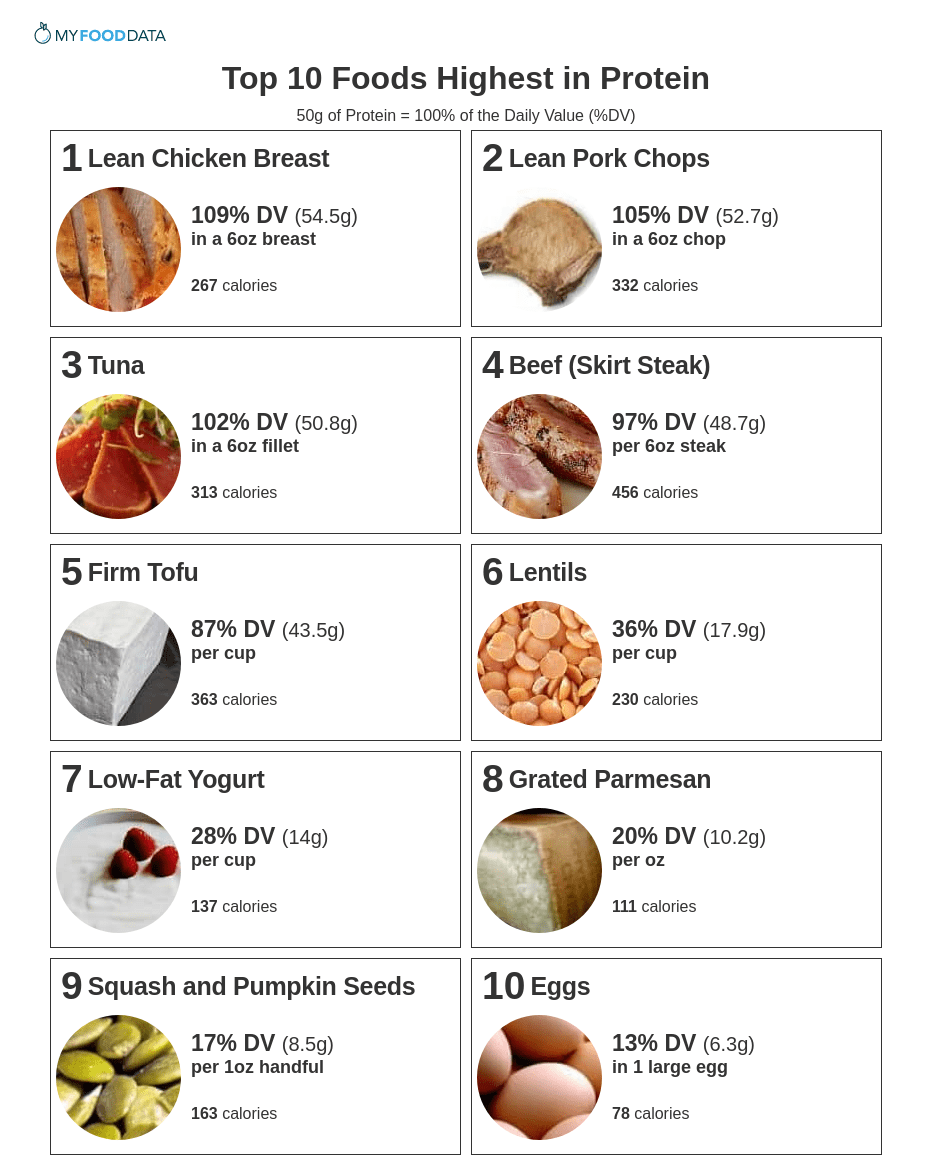
High Protein Foods by Nutrient Density (Most Protein per 100 Grams)
| Food | Serving | Protein |
|---|---|---|
| 1. Spirulina | 100 grams | 115% DV (57.5g) |
| 2. Dry-Roasted Soybeans | 100 grams | 87% DV (43.3g) |
| 3. Grated Parmesan Cheese | 100 grams | 83% DV (41.6g) |
| 4. Lean Veal Top Round | 100 grams | 73% DV (36.7g) |
| 5. Lamb Shoulder Roast | 100 grams | 71% DV (35.5g) |
| 6. Lean Chicken Breast | 100 grams | 64% DV (32.1g) |
| 7. Non-Fat Mozzarella | 100 grams | 63% DV (31.7g) |
| 8. Lean Pork Chops | 100 grams | 62% DV (31g) |
| 9. Tuna | 100 grams | 60% DV (29.9g) |
| 10. Squash and Pumpkin Seeds | 100 grams | 60% DV (29.8g) |
High Protein Isolates and Powders (Non-Commercial)
| Food | Serving | Protein |
|---|---|---|
| 1. Soy Protein Isolate | 1 tbsp | 12% DV (6.2g) |
| 2. Gelatin | 1 tbsp | 12% DV (6g) |
| 3. Egg White Powder | 1 tbsp | 12% DV (5.9g) |
| 4. Spirulina (Dried Seaweed) | 1 tbsp | 8% DV (4g) |
| 5. Non-fat Milk Powder | 1 tbsp | 5% DV (2.7g) |
| 6. Whey Powder | per tbsp | 2% DV (1g) |
Protein for Vegetarians and Vegans
Vegetarian protein foods include tofu, beans, lentils, yogurt, milk, cheese, green peas, nuts, seeds, whole grains, peanut butter, eggs, and white button mushrooms. See the list of vegetarian protein foods.
Vegan protein foods are similar to vegetarian sources, but exclude yogurt, milk, cheese, and eggs, because vegans do not eat any foods that originate from animals. Instead vegans can eat high protein vegetables like lima beans, spinach, and corn. See the list of vegan protein foods.
High Protein Meals
| Calories | Protein | Fat | Carbs |
|---|---|---|---|
| 276 (14% DV) |
28.4g (57% DV) |
4.7g (7% DV) |
28.5g (10% DV) |
Ingredients: 3oz canned tuna, 1 leaf romaine lettuce, 1 slice of tomato, 2 slices whole wheat bread.
Edit this Meal in the Nutrition Calculator
| Calories | Protein | Fat | Carbs |
|---|---|---|---|
| 420 (21% DV) |
16.4g (33% DV) |
17g (26% DV) |
57g (19% DV) |
Ingredients: 6oz of non-fat yogurt, 1/4 cup of uncooked oats, 1oz handful of pumpkin seeds, 1 medium banana.
Edit this Meal in the Nutrition Calculator
| Calories | Protein | Fat | Carbs |
|---|---|---|---|
| 429 (21% DV) |
65.1g (130% DV) |
14g (22% DV) |
12.9g (4% DV) |
Ingredients: 6oz chicken breast, 2 cups romaine lettuce, 1 cup cherry tomatoes, 1 oz grated Parmesan.
Edit this Meal in the Nutrition Calculator
| Calories | Protein | Fat | Carbs |
|---|---|---|---|
| 680 (34% DV) |
51.1g (102% DV) |
37.1g (57% DV) |
47.5g (16% DV) |
Ingredients: 1 cup firm tofu, 1/2 cup onions, 1 cup broccoli, 1 tsp ginger, 1/2 cup brown rice, 1 tbsp sesame oil, 1 tbsp soy sauce.
Edit this Meal in the Nutrition Calculator
| Calories | Protein | Fat | Carbs |
|---|---|---|---|
| 672 (34% DV) |
28.8g (58% DV) |
30.4g (47% DV) |
77.8g (26% DV) |
Ingredients: 1 cup of cooked lentils, 1/4 onion, 1 tblsp curry powder, 1/5 cup brown rice, 1 tblsp sesame oil, 1oz dry-roasted peanuts
View or Edit this Meal
About the Data
Data for the curated food lists comes from the USDA Food Data Central Repository.
You can check our data against the USDA by clicking the (Source) link at the bottom of each food listing.
Note: When checking data please be sure the serving sizes are the same. In the rare case you find any difference, please contact us and we will fix it right away.
About Nutrient Targets
Setting targets can provide a guide to healthy eating.
Some of the most popular targets include:- Daily Value (%DV) - The daily value (%DV) is a general guideline for consumption that will prevent deficiency of a particular nutrient in most people. The %DV refers to the percentage of an amount that\'s found in a single serving of a food. It also accounts for absorption factors. It is set by the U.S. FDA.
- Recommended Dietary Allowance (%RDA) - The RDA sets an average daily dietary intake level that is sufficient to meet the nutrient requirements of nearly all (97.5%) healthy individuals. It\'s more specific than the daily value, and varies by age and gender. The RDA is set by the US National Institutes of Health.
- Reference Dietary Intake (%RDI) -The reference dietary intake is similar to the recommended daily allowance, but is specific to age and gender. The RDI for amino acids is set by the U.N. World Health Organization.
- Adequate Intake (%AI) - This value is primarily used in reference to omega-3 and omega-6 fats. The Adequate Intake is set by the U.S. Institute of Medicine. Because there is less evidence to determine the ideal targets for consumption of these nutrients, the specific amount is considered to be less reliable. Using the term Adequate Intake, rather than one of the other terms, helps to emphasize that the ideal intake of that particular nutrient has not yet been scientifically determined.
See the Guide to Recommended Daily Intakes for more information.
Want to set your own targets? Sign up for an account and set custom targets in the daily food log.From the Nutrient Ranking Tool
Use the ranking tool links below to select foods and create your own food list to share or print.
- Foods High in Protein
- Foods Low in Protein
- Vegetables High in Protein
- Fruits High in Protein
- Vegetarian Foods High in Protein
- Nuts High in Protein
- Grains High in Protein
- Beans High in Protein
- Dairy High in Protein
- Breakfast Cereals High in Protein
- Fast Foods High in Protein
View more nutrients with the nutrient ranking tool, or see ratios with the nutrient ratio tool.
Related
- 11 Foods To Help You Build Muscle
- High Calorie Foods
- Vegetarian Sources of Protein
- Amino Acid Protein Calculator
- Vegan Foods High in Protein
- High Protein Beans
- High Protein Grains
- Cheeses Highest in Protein
- Vegetables High in Protein
- Fruits High in Protein
- Nuts High in Protein
- High Carb Foods
- Gourmet Low Carb High Protein Weight Loss Meal Plans
Data Sources and References
- Medline Plus on Protein
- Recommended Dietary Allowances: 10th Edition. National Research Council (US) Subcommittee on the Tenth Edition of the Recommended Dietary Allowances. Washington (DC): National Academies Press (US); 1989.
- FDA Information Page on Protein
- U.S. Agricultural Research Service Food Data Central
Try the recipe nutrition calculator, or daily meal planner.
Create a free account to log and track foods.


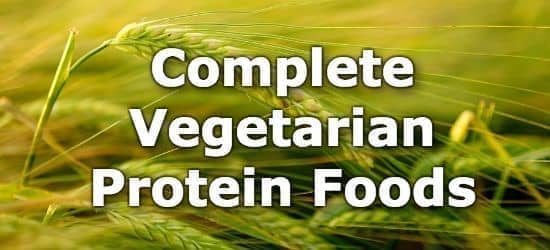 Next ➞
Next ➞